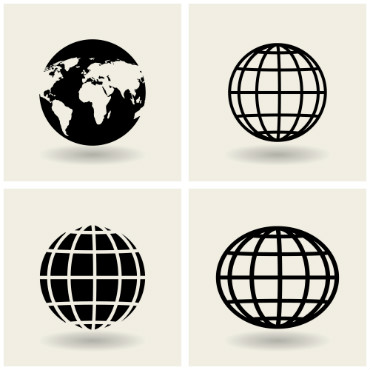How agile principles are driving digital development

USAID is adapting its international development efforts to rapid advances in technology, bandwidth and access.

When Indian Prime Minister Narendra Modi sat down for dinner at the White House with President Barrack Obama in September 2015, one of the topics of discussion was how to make digital payments more accessible to Indian merchants.
India is second in the world for smartphone purchases and Internet use, and the U.S. Agency for International Development has been helping the country expand the use of digital payments.
According to USAID’s research, 97 percent of retail transactions in India are conducted via cash or check, but only 6 percent of merchants accept digital payments. In the same vein, the World Bank found that India could save about 1 percent of its GDP annually if it digitized its cash-based subsidies.
USAID relies on the Digital Development team in its U.S. Global Development Lab to translate insights about the promise of technology into projects and products.
“When we talk about digital financial services, most people have heard about mobile money [but] what we focus on is the digital opportunity to bring more underserved people into financial sectors that meet their needs,” said Brian King, leader of the lab’s Digital Finance team. Other teams focus on mobile data and digital inclusion.
Decreasing the digital divide
A new USAID report, “From Principle to Practice: Implementing the Principles for Digital Development,” examines how technology can change the way international development work is conducted.
Although the premise of digital development has resulted in an explosion of pilot projects and experimentation around the world, the report says the time has come to bring some order and maturity to the field.
“Pilots have failed to move into scalable and sustainable programs,” the report states. “Solutions too often reinvent the wheel rather than building on robust platforms, infrastructure and shared services. Applications and services designed thousands of miles from their use environment failed to meet user needs. The creation of duplicative tools and systems has made data difficult to access and use for decision-making.”
USAID has proposed a core set of principles to drive digital development projects. Those principles — which will be familiar to anyone who has been following the path charted by the General Services Administration’s 18F organization — include user-centric design, scalability and sustainability, data-driven decision-making, open standards, open data, and modular and reusable design.
“If you look at the principles through that lens of adoption, diffusion, scale-up and sustainability...they are all important in varying ways and in different contexts for deploying an [information and communications technology] innovation,” King told FCW.
USAID’s report includes cases studies that illustrate how the principles work in practice. For example, it wasn’t readily apparent that a pediatric and maternal care app in Kenya needed to be improved until tests with different user groups showed how the tool was actually being used in the field. In addition, a health project in Zambia that focused on infant HIV diagnosis found success by using readily available technologies and managing via a common framework.
The report also notes some obstacles to using agile principles, including long planning and funding runways and funders and stakeholders who insist on having input into design decisions to the potential exclusion of end users.
Unlocking the promise of digital development
According to the World Bank’s 2016 World Development Report, the growth in digital communications and connectivity has not completely filtered down to the world of international development. Although data-driven development efforts are possible, “often organizational inertia prevents the benefits of innovative technologies from being achieved,” the report states.
That observation aligns with the World Bank’s larger finding that “ anticipated digital dividends of higher growth, more jobs and better public services have fallen short of expectations, and 60 percent of the world’s population remains excluded from the ever-expanding digital economy.”
“It’s not so much that [the World Bank] said that digital isn’t the driver of growth — it’s more than it’s not fully realized its potential and that the growth has been inconsistent,” said Jonathan Dolan, senior adviser for digital inclusion at USAID.
“It wasn’t necessarily that [information and communications technology] innovations weren’t having an impact, but there are other things that needed to be in place in order to maximize impact,” King said.
Indeed, the World Bank report says the USAID framework of iterative, user-centered, data-driven methodologies is the way to unlock the promise of digital development.
“Digital technologies facilitate rapid, real-time monitoring of outputs and outcome results that matter, and provide this information in a comprehensible form to those who can act on it — complemented by systems that assess impacts,” the report states.
But the realization of that promise requires good data, thorough evaluation and a willingness on the part of funders and program designers to continuously evolve their work.
A positive story
Moving from the lab to the field remains a challenge. In the case of the USAID’s digital payment initiative in India, major financial institutions such as Citi, Coca-Cola, HSBC, ICICI Bank, the World Bank’s International Finance Corp., ITC Ltd., MasterCard, Procter and Gamble, Visa and Vodafone are all on board. But bringing together the “private sector [to] work together on an issue, coordinating and facilitating that conversation between 40 organizations, as you can imagine, is not easy,” said Matt Homer, USAID’s lead on the project.
He added that although the private sector’s ability to enhance connectivity cannot be understated, “there is a point where demographic factors, geographic factors or something else can begin to break down the commercial case. [For USAID, the challenge is] what can we do at that point to de-risk market entry for the private sector, or demonstrate or signal that there is enough demand for a service provider to consider working there.”
“I think the intellectual challenge for us is identifying where the commercial case for connectivity starts to break down a little bit,” Dolan said.
George Ingram, a senior fellow at the Brookings Institution and former deputy assistant administrator at USAID, told FCW: “I think the issue is…how do you translate the experience and approach of the lab to the rest of USAID? And how do you translate their engagement through partnership, how do you adapt their understanding of technology and how [do you] access it in more traditional programs, and how do you transfer the culture of innovation? That’s very difficult for a large public institution that has so many different other mandates and rules and regulations to protect the public interest.”
Experts acknowledge that the keys to success are understanding which principles need more attention and how to implement them in various countries.
“It’s a positive story, but we’re just at the beginning of the story so we don’t know where it’s going to take us,” Ingram said.
NEXT STORY: Obama administration rallies new open data push





